New Matilda columnist Dr Lissa Johnson explains the rationale behind why violence by the West is okay, and violence against the West is an assault on freedom-loving ‘ingroups’.
I have recently been asked by news website the Tasmanian Times to respond to an article by freelance journalist Shane Humpherys, critiquing my analysis of the psychology behind the tragic Paris attacks.
Given that replying offers the opportunity of a case study in the psychology of systemic violence, and the metaphorical head-kicking that can come from challenging the status quo, I thought it was worthwhile providing a response.
My initial article outlined the shared psychological foundations – and human cost – of all intergroup violence, state-sanctioned or not. One main point was that victims of Western violence are just as human, just as dead or injured, and their families just as bereaved as victims of terrorist attacks.
I argued that if the Paris attacks are to be an attack on all humanity, then our grief must be grief for all humanity, and all innocent victims, including victims of our own collective violence. I cited civilians killed and injured by US drone attacks in Yemen as examples.
Another key point was that the violence of the US and its allies in the Middle East has been built psychologically upon the same dehumanizing, group-based, ‘us-versus-them’ mentality as that of violent extremists.
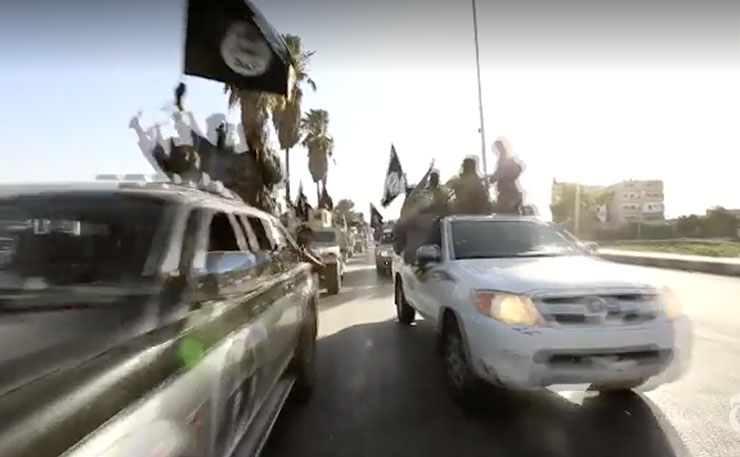
This upset Mr Humpherys. Quite a lot.
In his article, Humpherys variously described mine as a “nonsensical, disingenuous, duplicitous, denialist, apologist, intellectually negligent, intellectually dishonest, ill-conceived piece of psychological chicanery, [involving]complete obfuscation of the facts, [showing]utter contempt for those who have suffered under such atrocities, that frankly would sit well within the IS ‘ingroup’!” (exclamation mark original).
Humpherys argues that my article “provides [the perpetrators of the Paris attacks]with, frankly a pathetic excuse” and adds that “if we are to follow the rationale as espoused by Johnson, we should be reassessing our cruel response to the Nazi ideology. Similarly, Idi Amin and Pol Pot have been grossly misunderstood and we have failed to recognise their combined cultural value to humanity.”
Hmmmm.
Where to start?
HOUSE AD – NEW MATILDA IS TRYING TO RAISE MONEY TO HIRE A YOUNG ABORIGINAL CADET FOR OUR NEWSROOM FROM MARCH 2016. WE NEED YOUR HELP – PLEASE BACK OUR FUNDRAISING CAMPAIGN HERE
Perhaps with our common ground. Not surprisingly I agree with Humpherys that Nazi ideology, Idi Amin, Pol Pot and Islamic State are vile and morally reprehensible. I also agree that the citizens of Paris in no way deserve the horror that they have suffered and that the attacks on their city were abominable, as expressed in my article.
Humphreys would no doubt agree with me that the actions of the Paris perpetrators were “vile, vicious, cold-heartedly malevolent and destructive”.
He and I both find killing and atrocity abhorrent, clearly.
How did Humpherys get the idea, then, that I am an ‘apologist’ for Islamic State who believes that they offer ‘cultural value to humanity’?
Humpherys also no doubt shares my horror and deep sadness over the Paris attacks, which I expressed in my article. I felt the same horror and deep sadness reading about the drone attacks in Yemen.
He and I share our distress at both travesties as well.
Wait. No. Just Paris. (The killings in Yemen are different, Humpherys explains).
Regardless, how did Humpherys get the added idea that I have ‘contempt’ for victims of atrocity? So much so that he lumps me with Islamic State, saying that I ‘would sit well within the IS ingroup’?
I know he’s cross, but I am advocating less violence, not more.
It seems I have been deemed ‘them’ in Humpherys’ eyes. Like his characterization of a would-be terrorist who “practices their religious custom under the normally generous welfare safety nets of their adopted Western nations”, I have been placed on the other side of a psychological divide.
In this context, my arguments have been distorted into grotesque black-and-white caricatures, so that they may be demonized in the spirit of all ‘us-versus-them’ endeavours.
Why?
Because I criticsed the ingroup. And its wider institutions and systems.
Perhaps you have been there yourself. In conversation, on social media, with a friend or a stranger. The reaction can be explosive.
While no-one likes being called an apologist for terror, I must thank Humpherys for illustrating the rawness of the psychological nerve at the heart of ingroup defensiveness. The raging emotional force behind his response is evident.
I must also thank him for breathing life into a psychological process that I had wanted to mention in my original article, but omitted in the interests of the word count: system justification.
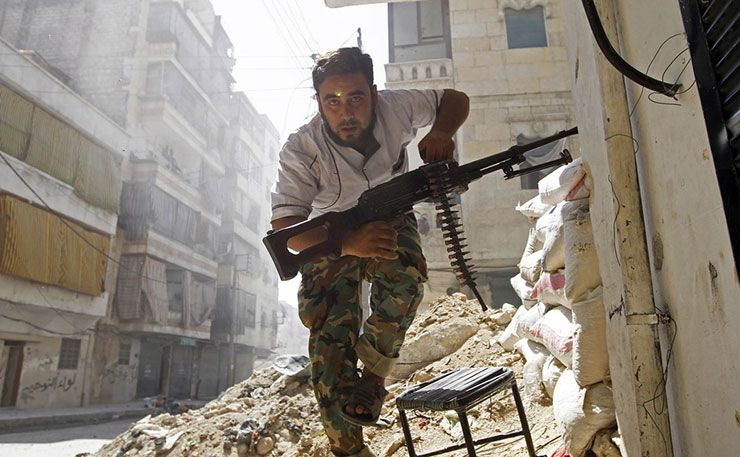
System justification is a process whereby people calibrate their perception of the world so as to maintain the belief that their social systems (government, religion, judiciary, military etc) are good, fair, right and just.
When valued social systems are criticized, the system justification impulse kicks in, causing people to defend their systems and double down on system legitimacy.
System justification is considered a form of self-deception, involving information processing biases and selective interpretation of evidence and facts, driven by a “profound” desire to view one’s society as benevolent and good.
In this case, the system in question is a system of violence. Humpherys believes me to be legitimizing extremist violence. I believe him to be legitimizing state-sanctioned violence.
He thinks the two are substantially different. I think they are substantially the same.
To my eyes, Humpherys’ article offers several common system-justifying arguments for Western collective violence, along with their underlying information-processing biases and blind spots, as outlined below.
In the interests of honesty I declare my own information processing bias to be one of low system justification. (Which, incidentally, is associated with low self-deception). Just saying.
Islamic State is a product of Islam
Humpherys begins by arguing that terrorism, such as that of Bin Laden, has been “motivated less by [US] foreign policy … and more by a fundamentalist view of Islam.”
To support this position, he spends a good deal of his article arguing against the claim that Islamic State grew out of the 2003 US-led invasion of Iraq.
He notes that Osama Bin Laden predated the Iraq war and adds, “If we are to be historically accurate here – IS emerged from northern Syria, not Iraq”
Humpherys closes his article by concluding that mine seeks to “rewrite history by drawing a link between the 2003 invasion of Iraq and the innocent civilians of France, where no such link exists.”
Countless credible commentators and experts would disagree, and Bin Laden has expressed objections to other acts of US imperialism in the Middle east, as described in this 1998 interview, which, like himself, predated the Iraq war.
While this does not excuse any of Bin Laden’s violence, it undermines Humpherys’ argument that his extremism can be traced neatly back to Islam.
All that aside, however, as a response to my article, focusing on the Iraq war is an odd choice. I never cited the Iraq war as a cause of violent extremism. Not once.
I cited George W Bush’s language around it, and US students’ attitudes towards it, as evidence of our parallel psychological processes with extremists, but that was it.
What I did say was that violence against the West was predictable given “our and our allies’ devastating actions in the Middle East”, by which I meant all manner of destructive US-led, funded, armed, trained and supported violence, spanning Afghanistan, Iraq, Libya, Syria, Israel, Palestine and Yemen, among others.
Al Qaeda, for instance, which Humpherys himself describes as “a model for Islamic militancy”, has been traced to Operation Cyclone, a CIA program to train and fund radical insurgents in the fight against the Soviet Union in Afghanistan from 1979-1989. Al Qaeda, said former British Foreign Secretary Robin Cook in the House of Commons, is an abbreviation for “the database”, and initially referred to the computer database of CIA trained extremists.
Before anybody shouts ‘conspiracy theorist’, you can read a summary by a Harvard University Research Scholar here.
The US has continued to provide money, arms and equipment to violent extremists since, whether deliberately or not.
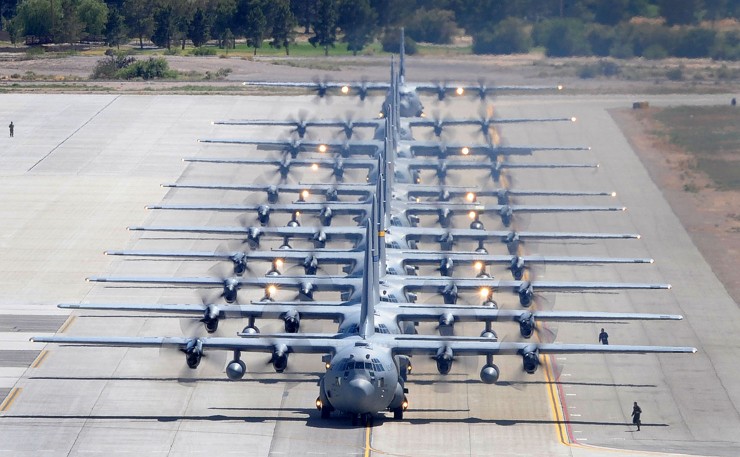
Earlier this year, newly declassified Defense Intelligence Agency documents revealed that the West and its allies knowingly sponsored extremist groups, including Al Qaeda, in their efforts to destabilise Bashir al-Assad in Syria, even though “the Pentagon foresaw the likely rise of the ‘Islamic State’ as a direct consequence of the strategy”. This was a “willful decision” according to Defense Intelligence Agency director at the time, Michael Flynn.
The Iraq war, then, though important, is not central to my argument at all. Humpherys has spent much of his time on a straw woman, arguing against a point I never made.
I doubt that this misrepresentation was deliberate, however. I think his system justification motives made him do it. They caused him to see something that wasn’t there.
Which isn’t peculiar to Humpherys. Human beings are wired to self-deceive in order to maintain their preferred versions of reality. In fact, that was the subject of my PhD.
In this case, the Iraq war may be one of the few Western military “indiscretions” (Humpherys’ word) able to penetrate a system-justifying mindset. As the Iraq war has been widely denounced as disastrous, even the most system justifying eye can probably see that it makes the West look bad.
The only system justifying path, then, is to remove it from the extremist equation, as Humpherys sought to do.
All the other violent and disastrous acts of US imperialism in the Middle East are ignored because they probably never made it through to system-justifying consciousness in the first place. They were unable to penetrate the system-justifying cognitive force field, remaining comfortably outside awareness in tenacious blind spots.
Another self-deceptive straw woman in Humpherys’ argument, which he shoots at repeatedly, is my (nonexistent) claim that violent extremism is entirely the West’s fault, rendering extremists themselves blameless.
This is a black-and-white, us-versus-them, cardboard cut-out caricature of the claim that responsibility can, and should, be shared. It reflects intergroup polarisation at work.
Any cool head knows that acknowledging one party’s role in a conflict does not absolve the other of culpability. Even children understand this. Eg, “Both of you – cut it out!”
The West’s violence is different. Better. Less awful.
Humpherys, no doubt unconsciously and with the best of intentions, uses selective and arbitrary criteria to assess violence for its atrocity.
His key atrocity indicators include degree of celebration, and vests.
To argue that the violence of the West is less heinous, he asks, “when was the last time we saw a member of the ADF walk into a café with a bomb vest strapped to themselves?” And notes, “When a suicide bomber detonates in a marketplace… the celebrations of the associated perpetrators ring out.”
He contrasts this with US pilots who take no pleasure in killing innocent civilians, which they do from afar rather than with vests in marketplaces.
This reasoning is tantamount to claiming that domestic violence only matters if the perpetrator throws a party afterwards.
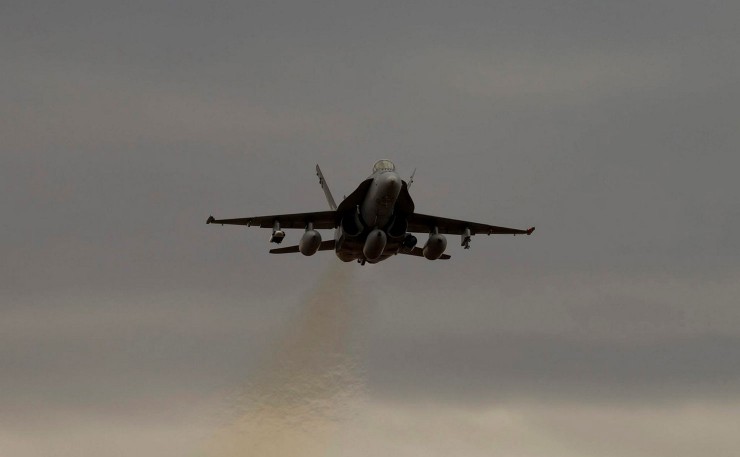
Department of Defence)
Moreover, upon killing Libya’s leader Colonel Muammar Gaddafi, after NATO dropped bombs in 10,000 sorties on Libya and supported radical insurgencies, creating mayhem for Libyan people, Hilary Clinton laughed and rejoiced, “We came, we saw, he died”. She followed this with a jovial clap.
Looks like “celebrations of perpetrators ringing out” to me.
Prior to the NATO ‘jamboree of aerial destruction’ in Libya, Harvard University Fellow Garikai Chengu says that “far from being a military dictatorship, Libya under Mr Gaddafi was Africa’s most prosperous democracy”. He says that just prior to the attacks, Libya was praised by the UN for its human rights and women’s rights achievements, including policies ensuring that “education was a human right and it was free for all Libyans”, and “money from oil proceeds was deposited directly into every Libyan citizen’s bank account.”
After the NATO attacks 2.4 million Libyan people are in need of humanitarian assistance. During the bombardment the US stopped recording civilian deaths, let alone mourning them. As a result estimates of casualties are difficult to ascertain, and range between 2,500 and 25,000.
Even had Hilary Clinton not celebrated this jamboree of destruction, the mainstream Western world has been largely indifferent to, and uninterested in, the Libyan people. Turning a blind eye in this way is a significant component of the emotional trauma suffered by those whose nations and loved ones have been blasted to smithereens.
As a man who lost his son in drone attacks in Yemen says, “They just kill. They do not know what havoc their missiles have caused. They are unaware of the suffering they create for our families.”
Indifference, then, along with celebration, deserves a place on Humpherys’ atrocity-assessment scale.
As does death count. While it may be true that extremists wear more vests, the US kills more innocents.
A recent study by a Nobel Peace Prize winning group of physicians found that the death toll from the war on terror since 9/11 is between 1.3 and 2 million. Islamic State, on the other hand, is estimated to have killed 10,000 people.
Granted, the war on terror has been going for over 10 years and Islamic State only declared a caliphate in 2014. The US and its allies have had more time to kill.
Hang on…
After a decade of carnage, Islamic State emerged. Could it be…?
Nah.
Probably just a coincidence.
To real people living real lives in real places, these numbers matter. A parent who has lost a child, a child who has lost a parent – anyone who has lost anyone – will be just as bereaved and traumatized, and just as terrorized, whether the killers wear vests or not.
More deaths means more trauma and terror. On that score the West is winning.
To further exonerate Western killing, Humpherys claims that Western civilian casualties are subject to “a chain of legalised oversight” and “are almost always met with legal and disciplinary retribution”.
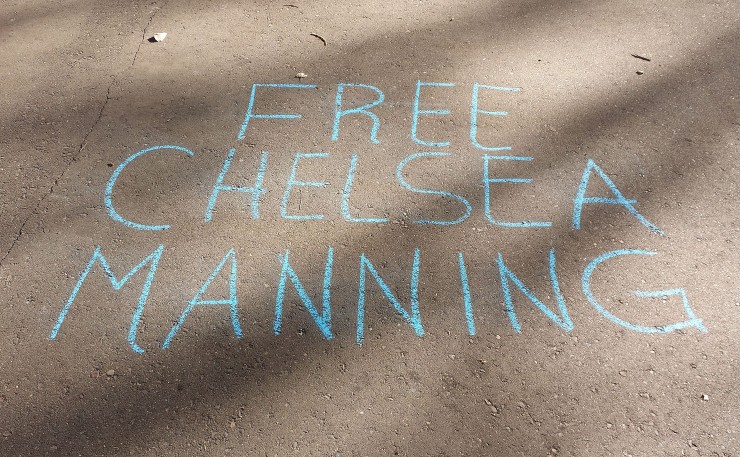
Legal and disciplinary retribution? Almost always? Really?
As mentioned, the US failed to even record civilian casualties in Libya, let alone investigate them. Drone attacks on civilians in Yemen routinely go uninvestigated and Chelsea Manning is in prison for blowing the whistle on innocent civilian deaths in Iraq, while the perpetrators remain free.
Part of the problem, according to Lawyer Chase Madar, is that International Humanitarian Law (which he notes is a fancy term for the law of war) “turns out to be less concerned with restraining military violence than licensing it”. Moreover, even “the laws of war that aspire to restrain deadly force are often weakly enforced and routinely violated.”
Perhaps that is why the millions of innocent civilians who have been killed in the ‘war on terror’ are mostly deemed collateral damage rather than war crimes, unworthy of disciplinary oversight.
All this without even getting started on those killed by our allies with US weapons, for instance in Gaza.
Where are those chains of legalized oversight when you need them?
While failure to consider all these facts in assessing the atrocity of our own violence might seem callous towards our victims, it is also often driven by motives that are essentially altruistic.
To a person who values morals, ethics and humanitarianism deeply, with a pressing need to view their society favourably, it is simply too painful to acknowledge that their own institutions and authorities are guilty of atrocity. The horrendousness is just too much to bear.
The Middle East has brought this on themselves. Their leaders are genocidal tyrants.
No doubt motivated by such altruistic ideals, Humpherys says that extremism and instability in the Middle East “is primarily a product of the Middle Easts’ (sic) perennial domestic political turmoil marked by brutal military dictatorships and Theocracies, which… practice policies, either implicitly or explicitly, of ethnic, cultural and religious cleansing”.
Whether or not this is an oversimplified overstatement that overlooks the role of Western imperialism, and ignores realities such as those in Libya, Australians are in no position to lecture anyone on ethnic and cultural cleansing.
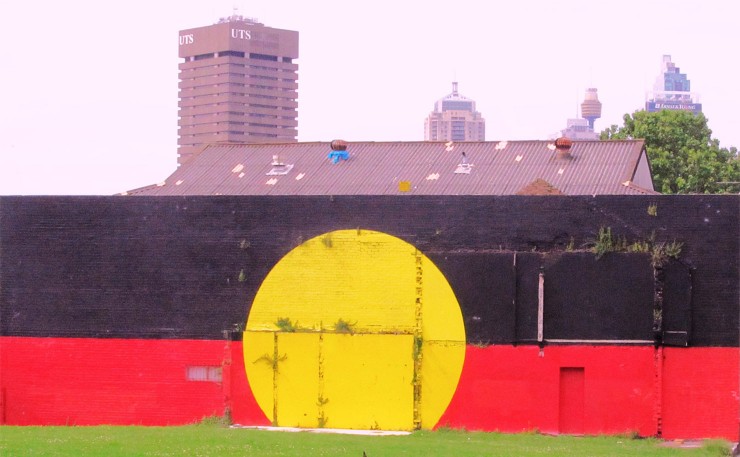
As Gary Foley has noted,
“From the beginning of the British invasion of Australia (justified on the myth of terra nullius), the Indigenous people were slaughtered on a grand scale. In Tasmania between 1804 and 1834, the Aboriginal population was reduced from an estimated 5000 people to just 200, which represented a 90% reduction in just 30 years. In Victoria it has been estimated that the Koori population declined by about 60% in just 15 years between 1835 and 1850 as more than 68 individual ‘massacres’ were perpetrated in that period.
“Whilst indiscriminate killings of Aborigines were to continue well into the 1930’s, the widespread genocidal activity of early ‘settlement’ gave way to a policy of containment. This was typified by the Aborigines Protection Act 1909, which established the first Australian ‘concentration camps’ to provide a place for the doomed race to die off”.
Are we in Australia due for some regime change as a result?
If not, why is ‘their’ ethnic and cultural cleansing unforgivable and ‘ours’ forgettable?
What makes ‘us’ so special?
Race? Religion?
There they are again. Those groups.
The wider world
System-justifying distortions such as these are not specific to Mr Humpherys. They fly around over discussions of the Middle East, Islam, militarism, foreign policy and race relations like rhetorical drones dropping incendiary psychological devices.
Such system-justifying biases serve an ingroup glorifying end. They mentally purify our own violence against innocents, by selectively filtering out the immorality, the human cost and the horror, seeing atrocity only in the violence of others.
It is a fierce bias, aided and abetted by mainstream news that engages in the very same distortions and blind spots.
At a time when experts around the world are warning of grave, irreversible consequences of the current status quo, including military escalation, nuclear conflict, and climate catastrophe, excessive system justification is a dangerous thing. Our systems, in important ways, need to change.
That version of reality, however, can be hard to hear. Not everyone is able to stomach it psychologically.
Which is why, in my view, although Humpherys and I share the same vision of a humane and just society, we disagree on the actual state of the world.
For illustrating this, and the issues involved, I once again thank Humpherys for his critique of my article, and for the opportunity to respond.
HOUSE AD – NEW MATILDA IS TRYING TO RAISE MONEY TO HIRE A YOUNG ABORIGINAL CADET FOR OUR NEWSROOM FROM MARCH 2016. WE NEED YOUR HELP – PLEASE BACK OUR FUNDRAISING CAMPAIGN HERE
Donate To New Matilda
New Matilda is a small, independent media outlet. We survive through reader contributions, and never losing a lawsuit. If you got something from this article, giving something back helps us to continue speaking truth to power. Every little bit counts.




